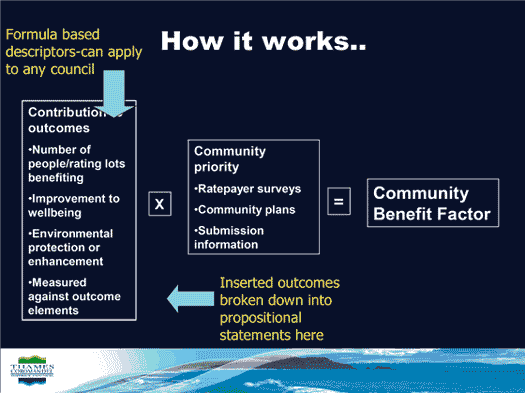Case study 7.2
Thames-Coromandel District Council – Seeing asset management in its local context means that the organisation can talk to local people about issues that they understand and are interested in
Thames-Coromandel District Council’s vision statement provides the basis for developing activity and asset management plans. The natural environment of the Coromandel peninsula and its associated leisure and recreation activities are a big driver for asset management planning.
Senior officers and councillors are involved in a series of workshops to set the Council's priorities by striking a balance between what is wanted and what is affordable. The Council has developed a risk prioritisation matrix that ensures that all capex projects are considered relative to each other and in relation to the Council’s priorities. The matrix starts by assessing the overall contribution to community benefit from any particular council good or service. Projects, activities, and groups of activities can be assessed to show the contribution they make to community outcomes as an initial part of the prioritisation process. The result is that the Council is clear about its intended approach towards its major assets.


Given the influx of tourists to its district in the summer months, the Council is mindful of the need to consult with both permanent and temporary residents of the district and makes positive attempts to do so.
The Council finds that its "Community Benefit Factor" helps set priorities and clarifies the rationale for decision-making. It finds that providing good consistent evidence about community priority and benefit is powerful and significantly influences its planning.
